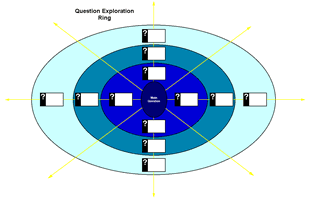Annie in High School: 1974-1977
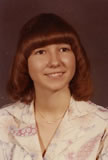 By the time Annie is ready for high school graduation in the mid 1970s, she has become a mature student information specialist. Although she seeks assistance when she has specific questions, she enjoys the challenge of solving her own problems. Her investigations are no longer restricted to class assignments. She applies her skills whenever she is faced with the need for information to solve a problem or make a decision.
By the time Annie is ready for high school graduation in the mid 1970s, she has become a mature student information specialist. Although she seeks assistance when she has specific questions, she enjoys the challenge of solving her own problems. Her investigations are no longer restricted to class assignments. She applies her skills whenever she is faced with the need for information to solve a problem or make a decision.
Annie has combined her interests in the outdoors and music with a passion for the songs of John Denver and the Rocky Mountains. She's also getting more involved with group activities as a member of the girl's football team, band, and drama.
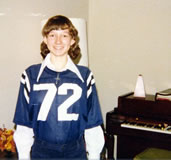
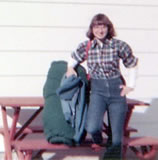
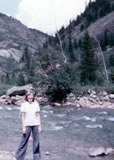
Questioning & Exploration
Annie's Grandpa "Pete" Smith is a farmer in rural Iowa. Below is a Annie's favorite photograph of her Grandpa, dad, and Grandma around 1940.
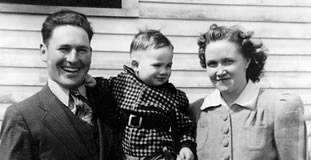
Annie's Grandpa Smith just found out he doesn't have bursitis of the shoulder, he has cancer. No one seems to know much about it, so it's time for an investigation. Annie likes to initiate an inquiry by listing what she knows and doesn't know. Her chart is shown below:
What I Know |
What I Don't Know |
|
|
A couple of the questions could be addressed immediately by Annie's parents. Grandpa has adrenal gland tumors causing Cushing's Syndrome. They aren't sure about the extent of the cancer or the implications, but the prognosis isn't good. Annie's father noted that a disproportionate number of Iowa farmers die from rare cancers. He wonders about a possible connection between environmental factors such as use of farm chemicals and cancer.
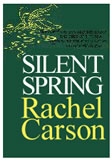 Having read Silent Spring (1962) by Rachel Carson, I understood the strong connection between chemical pesticides and the environment. Carson asked the question, "can anyone believe it is possible to lay down such a barrage of poisons on the surface of the earth without making it unfit for all life?"
Having read Silent Spring (1962) by Rachel Carson, I understood the strong connection between chemical pesticides and the environment. Carson asked the question, "can anyone believe it is possible to lay down such a barrage of poisons on the surface of the earth without making it unfit for all life?"
Although articles in the World Book Encyclopedia contained some background information about cancer, the information from Annie's parents led to a new series of questions. The next level of investigation required a trip to the school library to address the following questions:
The Cancer
- What is Cushing's Syndrome?
- What is cortisol?
- What are the adrenal glands?
- What is an adrenal glands tumor?
- What are the treatment options?
- What is the prognosis for adrenal cancer?
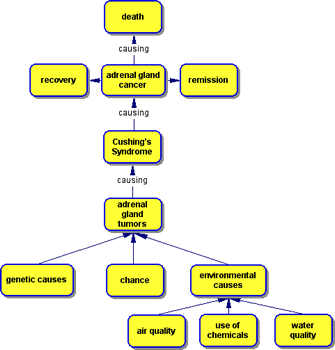 Having already gained background information from the encyclopedia, Annie was ready to examine authoritative medical resources. The school media specialist suggested two excellent medical reference books. She also provided Annie with a vertical file folder containing brochures and other information from the American Cancer Society.
Having already gained background information from the encyclopedia, Annie was ready to examine authoritative medical resources. The school media specialist suggested two excellent medical reference books. She also provided Annie with a vertical file folder containing brochures and other information from the American Cancer Society.
Annie is getting a little confused about what causes what effect. She creates a concept map to visualize the relationships associated with the illness.
The second round of questions satisfied Annie's immediate thirst for answers related to her grandfather's condition. However as she analyzed the information she gathered, a series of much more complex questions emerged. These are listed below:
The Cause
- What causes adrenal gland cancer?
- Do farmers have a higher rate of cancer than the general population? If so, what kinds and why?
- Do environmental factors contribute to cancer? If so, which ones and how?
The Cure
- What constitutes a cancer cure?
- Do any of the treatments lead to a cure?
- What is remission and recovery?
Another trip to the library yielded useful nonfiction books on cancer. Unfortunately some of the best materials weren't available in the school library and had to be ordered through interlibrary loan. Because the school library had a relationship with the local university, Annie was able to order copies of professional journal articles through the university. Unfortunately many of these articles contained information that was beyond Annie's medical expertise. None of the articles described a definitive cause or cure for cancer.
Assimilation & Inference
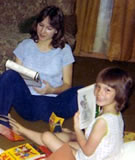 After locating, evaluating, reading, and organizing the materials on Cushing's Syndrome and adrenal gland tumors, Annie began to understanding how cancer was connected to other diseases and medical problems. She could also apply this information to her grandfather's situation. Annie created a diagram for herself labeling the parts of the body affected, defining terms, and building an understanding of how the cancer spreads and is treated. However this only addressed the first of the three categories of questions. She still didn't have a firm understanding of the cause or the cure. As she analyzed her notes she found that although doctors understood what was happening in the body, they really had little knowledge of the underlying cause or a permanent cure.
After locating, evaluating, reading, and organizing the materials on Cushing's Syndrome and adrenal gland tumors, Annie began to understanding how cancer was connected to other diseases and medical problems. She could also apply this information to her grandfather's situation. Annie created a diagram for herself labeling the parts of the body affected, defining terms, and building an understanding of how the cancer spreads and is treated. However this only addressed the first of the three categories of questions. She still didn't have a firm understanding of the cause or the cure. As she analyzed her notes she found that although doctors understood what was happening in the body, they really had little knowledge of the underlying cause or a permanent cure.
Annie shared her diagram and thoughts with her parents. With the help of Annie's parents, she developed a short list of questions to ask the doctor. She was both frustrated and gratified to learn that doctor didn't really know much more about causes and cures than she was able to glean from the medical literature. However he was able to validate her conclusions.
The discovery that doctors know very little about the causes and cures for cancers was very disconcerting. Annie decided to conduct further investigations into two areas. First, she sought information about a possible link between cancer and the environmental conditions found on farms. Second, she explored the status of cancer research. She was not able to draw any conclusions. Instead she described the need for future research and vowed to trace progress.
Reflection
Annie has become a mature, student information scientist.
Skills. Annie can see that her questioning skills are maturing. Although she still starts with basic level "what" kinds of questions, her thoughts soon create connections to more complex questions focusing on "how" and "why."
Strategies and Scaffolding. Annie uses a variety of resources including reference materials, professional journals, professional organization documents, as well as personal interviews. She understands the importance of authority and evaluation in materials selection. Annie uses visual tools such as charts, question exploration rings, and diagrams for planning, analysis, synthesis, and communication.
Realization. As Annie matures as a student information scientist, she recognized that all inquiries don't end in a final report or letter grade. Investigations often end in more questions than they answer. However each inquiry refines an information scientist's craft and builds new knowledge that can be applied to future information seeking endeavors.
Standards
Information Literacy Standards Indicators (Selected from Information Power, AASL, 1998)
- Recognizes that accurate and comprehensive information is the basis for intelligent decision making.
- Distinguishes among fact, point of view, and opinion.
- Identified inaccurate and misleading information.
- Integrates new information into one's own knowledge.
- Devises strategies for revising, improving, and updating self-generated knowledge.
- Seeks information from diverse sources, contexts, disciplines, and cultures.
Indiana Content Standards
- Understand that and describe how the maintenance of a relatively stable internal environment is required for the continuation of life and explain how stability is challenged by changing physical, chemical, and environmental conditions, as well as the presence of disease agents (Biology).
- Recognize that and describe how the human immune system is designed to protect against microscopic organisms and foreign substances from outside the body and against some cancer cells that arise within (Biology).
- Understand and explain that the information passed from parents to offspring is transmitted by means of genes which are coded in DNA molecules (Biology).
- Explain that gene mutations can be caused by such things as radiation and chemicals (Biology).
- Trace the relationship between environmental changes and changes in the gene pool (Biology).
- Explain that the amount of life any environment can support is limited by the available energy, water, oxygen, and minerals, and by the ability of ecosystems to recycle the reside of dead organize materials. Recognize, therefore, that human activities and technology can change the flow and reduce the fertility of the land (Biology).
- Describe how agricultural technology requires trade-offs between increased production and environmental harm and between efficient production and social values (Environmental Science).
- Understand and explain that waste management includes considerations of quantity, safety, degradability, and cost (Environment Science).
- Differentiate between natural pollution and pollution caused by humans and give examples of each (Environmental Science).
- Compare and contrast the beneficial and harmful effects of an environmental stressor such as herbicides and pesticides on plants and animals. Give examples of secondary effects on other environmental components (Environmental Science).
- Explain that Rachel Carson's Book Silent Spring explained how pesticides were causing serious pollution and killing many organisms (Environmental Science).
- Understand that as a result of Silent Spring, there are now hundreds of national, state, and local laws that regulate pesticides (Environmental Science).
Times Have Changed
Although the questions and process would remain the same, Annie's access to information would have been much different today. Although the library continues to be a wonderful learning laboratory, the tools and resources have changed dramatically. For example, most vertical file collections have been replaced by website pathfinders designed by school library media specialists to help patrons locate quality online resources such as government and professional organization websites. Today's instructional specialist would have directed Annie to subscription electronic databases for access to endless online medical journals and resources without the need to travel long distances to a university library.
Electronic databases. Annie faced the problem of accessing articles published in professional journals. Today, electronic databases provide quick and easy access to these resources. However Annie noted that access wasn't the only problem. Most articles written for scholarly journals contain medical information beyond her expertise.
Authority. Annie didn't have easy access to professional resources beyond the library or local hospital. Today, the websites of professional organizations and non-profit agencies such as the National Cancer Institute, National Institutes of Health, and American Cancer Society provide endless authoritative contacts and resources. However, these resources must be carefully evaluated. There are many medical websites developed by caring individuals and groups that are not sanctioned and may not be monitored for accuracy.
Support. The Internet is a wonderful tool for making contacts, establishing communications, and sharing news. Very small groups of people can easily connect with each other. For example, Cushing's Syndrome is very rare. It would have been impossible to find a support group in the 1970s. Today people interested in this rare disease can go to the Cushing's Support & Research Foundation website. Today's websites, forums, and blogs provide a voice for discussion and interaction. However they can also be a tool for spreading incomplete or inaccurate information. As a result, the skills of an information scientist in evaluation are more critical than ever.
Technology Tools. Today's technology tools would be useful in helping Annie in visualize her thinking, data organization, and results. For example, Inspiration software can be used to create a question exploration ring.
Click the image below to view a template for a Question Exploration Ring in Inspiration.
Related Resources
Blondell, Jerome. Epidemiologic Bibliography: Cancer, Pesticides, and Farming. U.S. Environmental Protection Agency, 1988
Carson, Rachel. Silent Spring. Boston: Houghton Mifflin Company, 1962.
Davis, Devra. When Smoke Ran Like Water: Tales of Environmental Deception and the Battle Against Pollution. Basic Books, 2002.
Kennedy, Robert F. Crimes Against Nature: How George W. Bush and His Corporate Pals Are Plundering the Country and Hijacking Our Democracy. HarperCollins, 2004.
Kimbrell, Andrew. Fatal Harvest: The Tragedy of Industrial Agriculture. Foundation for Deep Ecology, 2002.
Kubiak, Stanley. Pesticides, Human Health, Research and Cancer: Index of new information with bibliography. ABBE Publishers Association of Washington, 2002.
Mckibben, Bill. The End of Nature: Tenth Anniversary Edition. Anchore, 1997.
McPhee, John. The Control of Nature. Farrar, Straus and Giroux.
Miller, G. Tyler. Living in the Environment: Principles, Connections, and Solutions (14 edition). Brooks Cole, 2004.
National Wildlife Federation. Pollution: Problems & Solutions. McGraw-Hill, 1998.
Wargo, John. Our Children's Toxic Legacy: How Science and Law Fail to Protect Us from Pesticides, Second Edition. Yale University Press, 1998.
Watts, Duncan. Six Degrees: The Science of a Connected Age. W. W. Norton & Company. 2004.
Wilson, Edward O. The Diversity of Life. W. W. Norton & Company, 1993.
Wilson, Edward O. The Future of Life. Vintage, 2001.
Wright, Richard. Environmental Science : Toward a Sustainable Future (9th Edition). Prentice Hall, 2004.
Project Update
Many inquiries last a lifetime. Although Annie's grandfather died a month after her high school graduation, thirty years later she continues to track the research on agricultural lifestyles, environmental hazards such as pesticide use, and cancer through project such as the Agricultural Health Study. Today, her research is conducted online. Below are a couple recent findings:
- A Focus on Farming Health in Iowa in Environmental Health Perspectives Volume 107, Number 3, March 1999
- Agricultural Pesticide Use May Be Associated With Increased Risk of Prostate Cancer from National Institute of Environmental Health Sciences
- Passing Along Pesticides in Environmental Health Perspectives Volume 112, Number 5, April 2004

